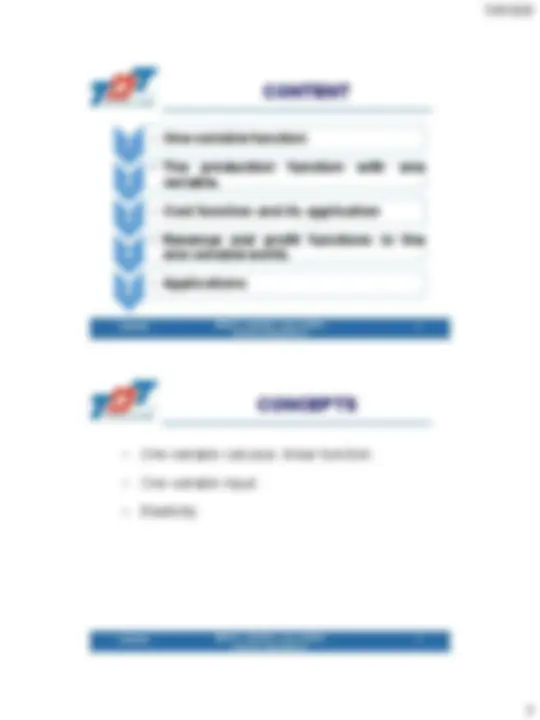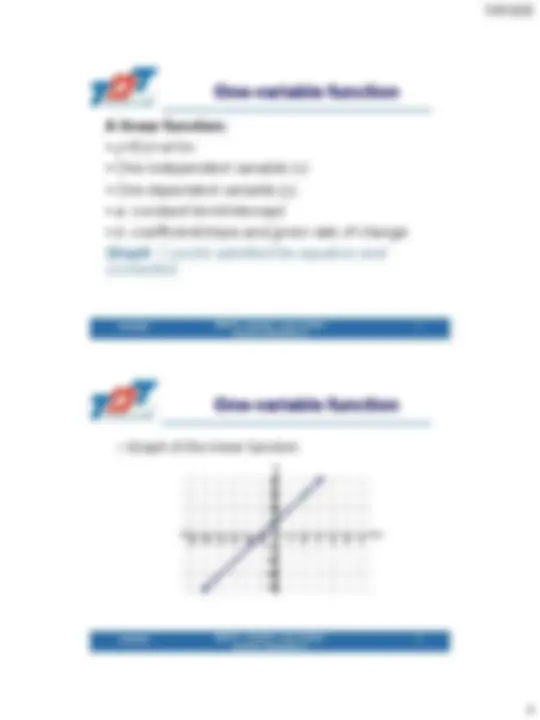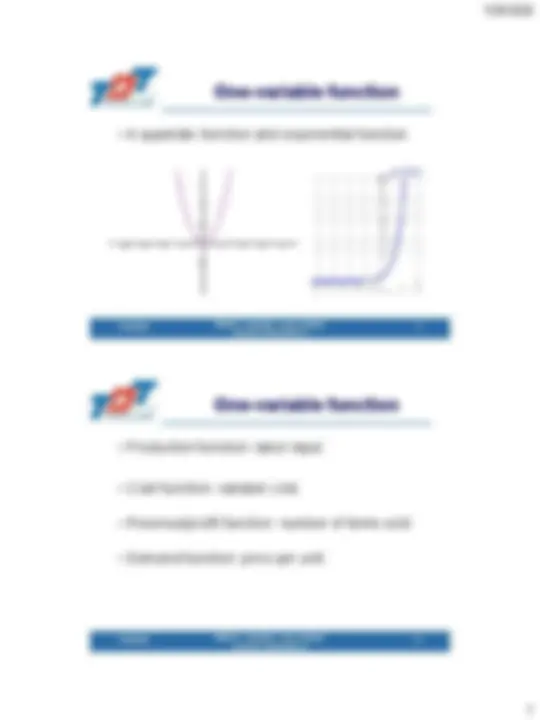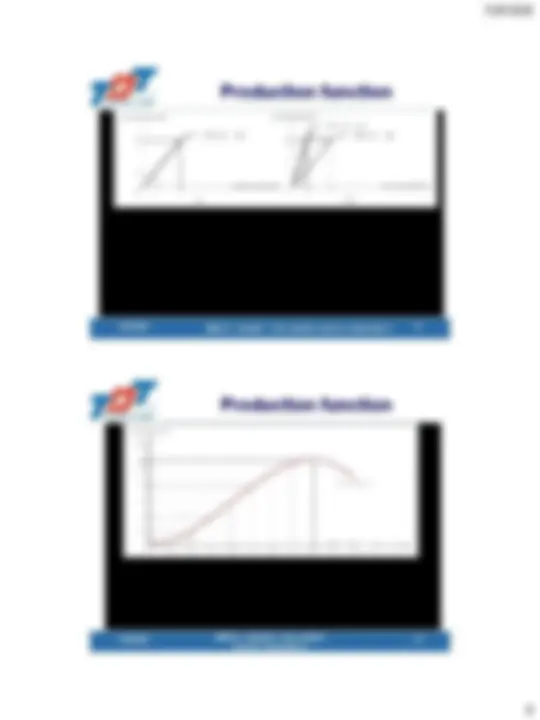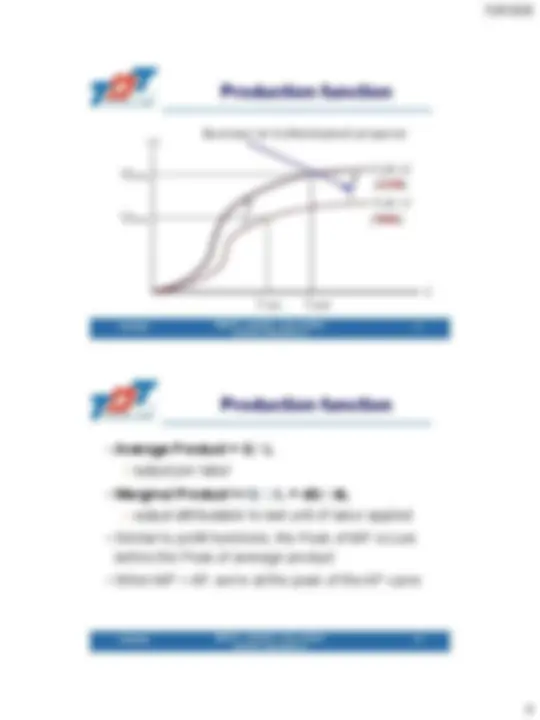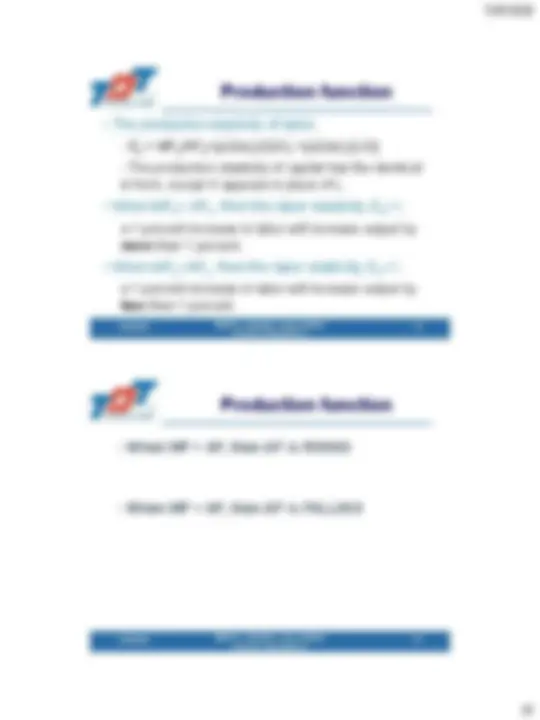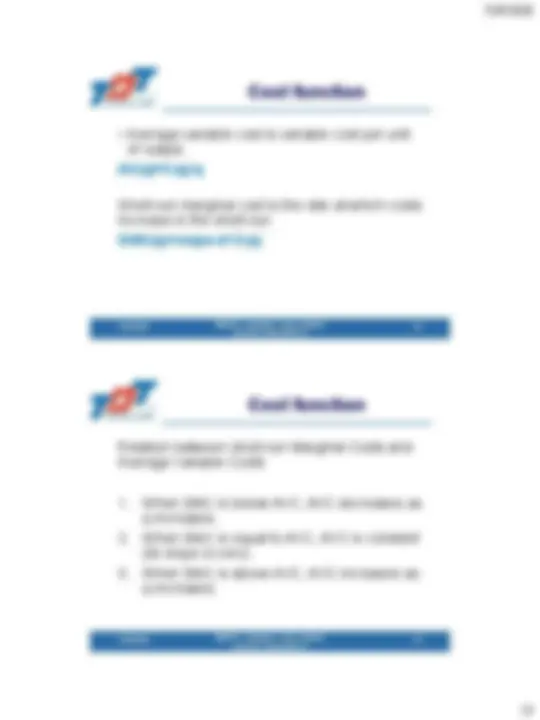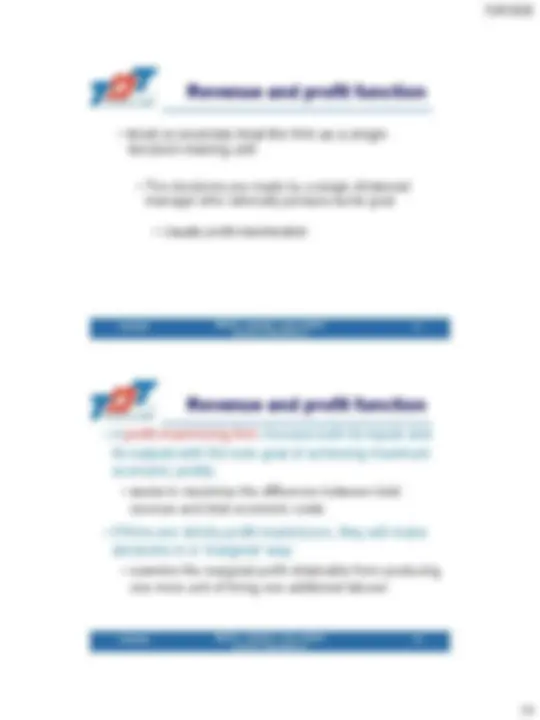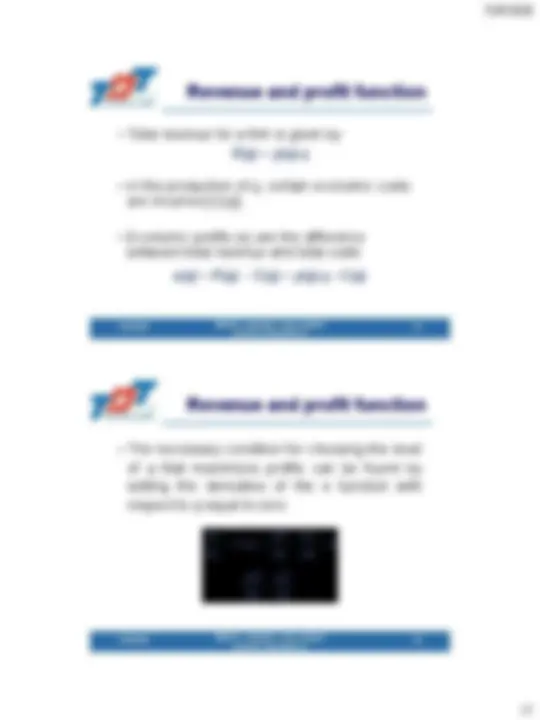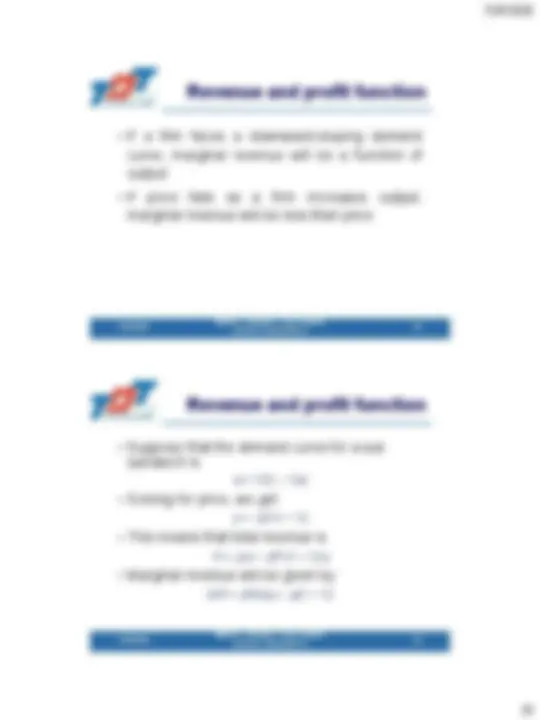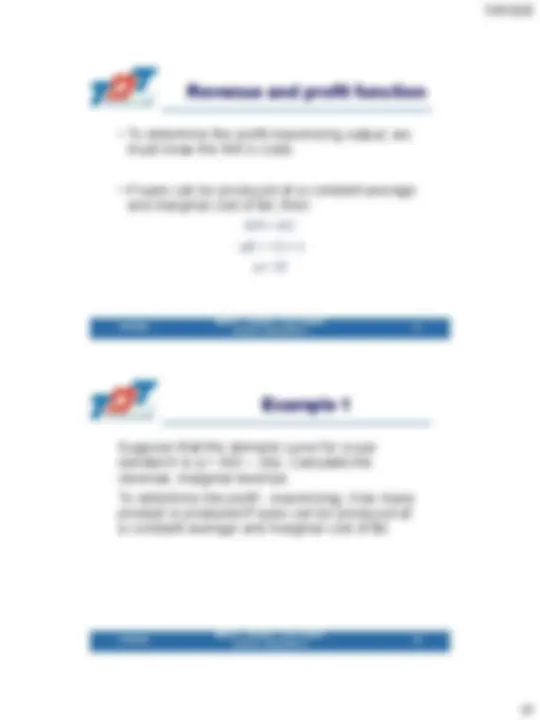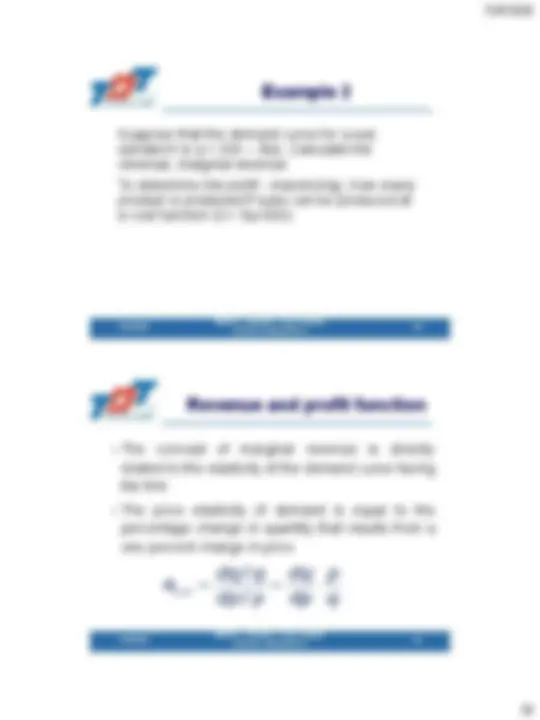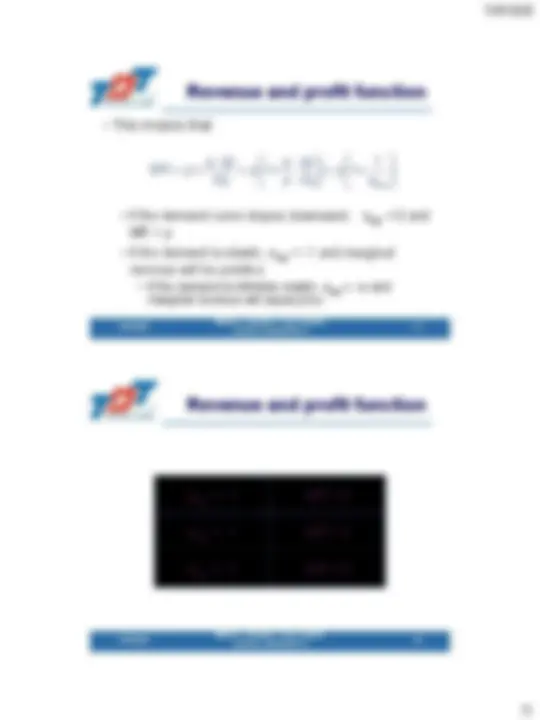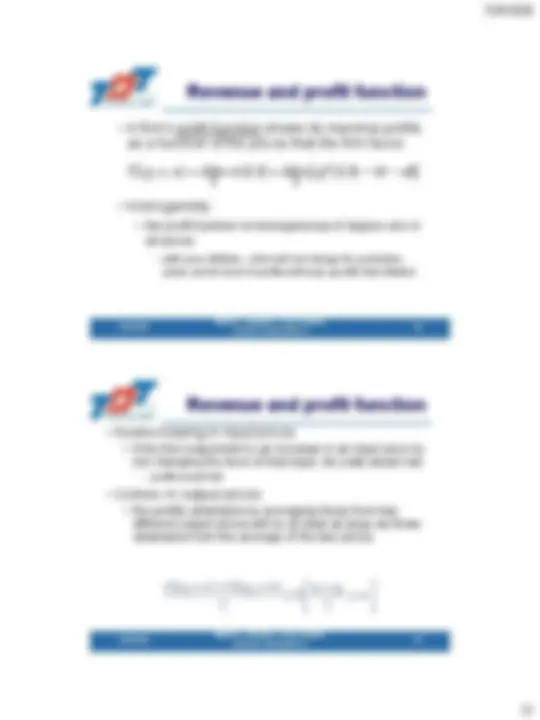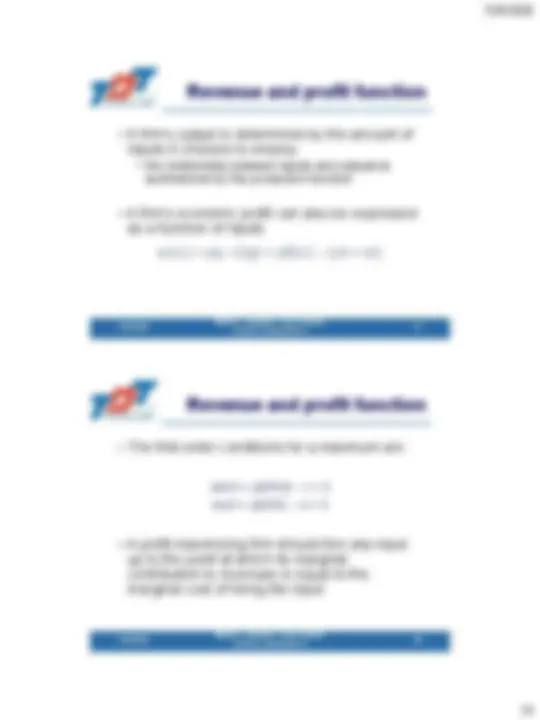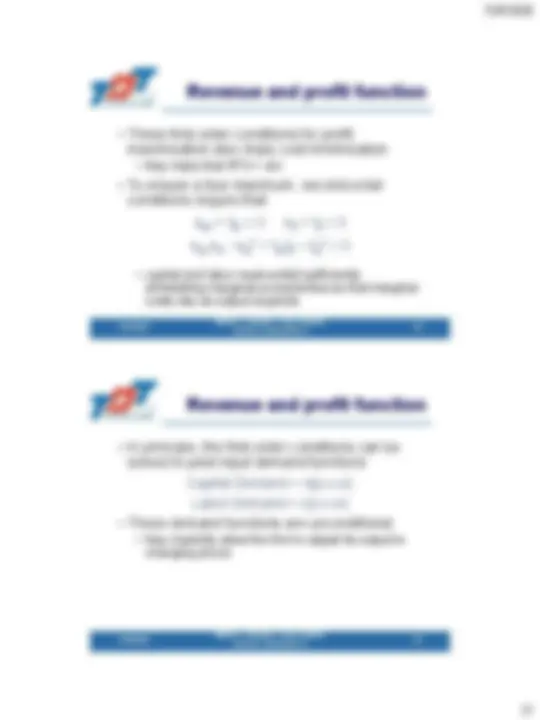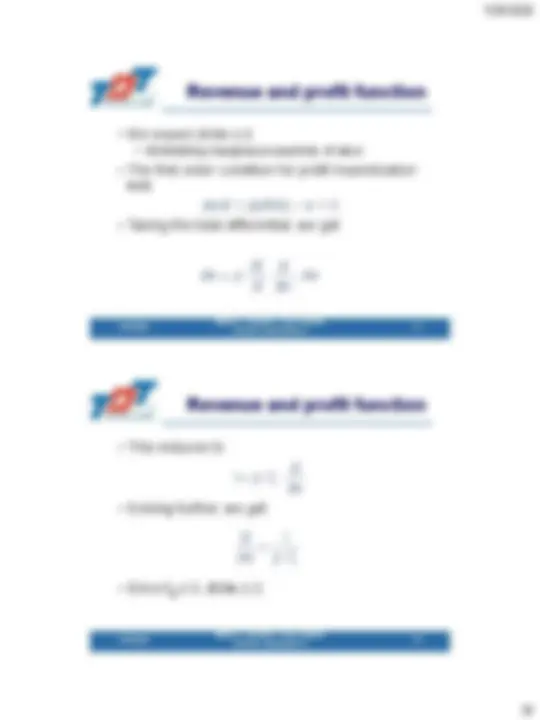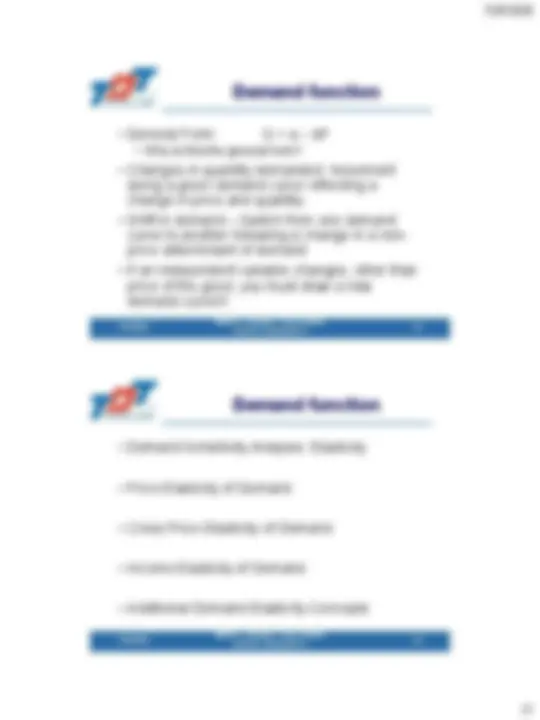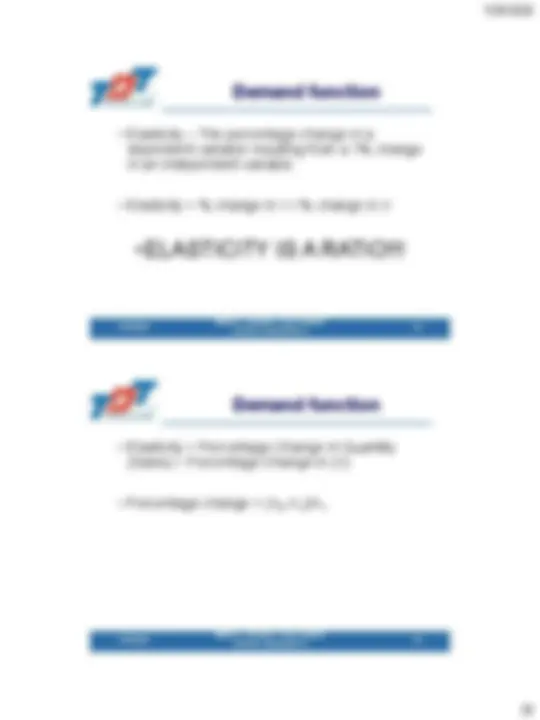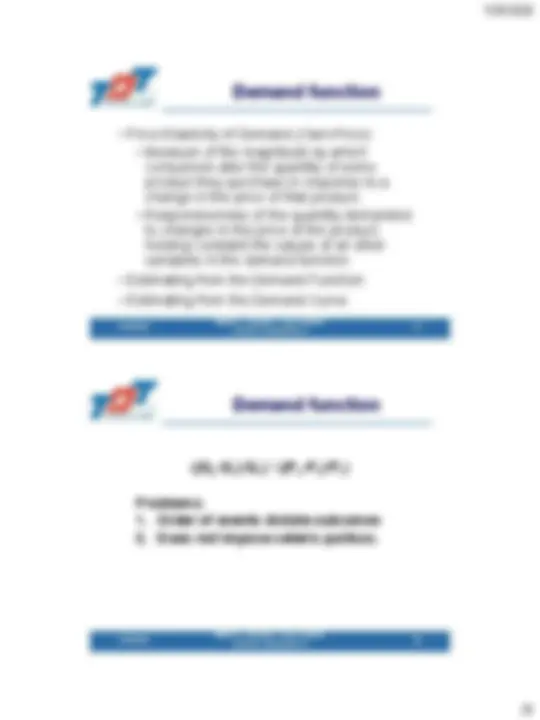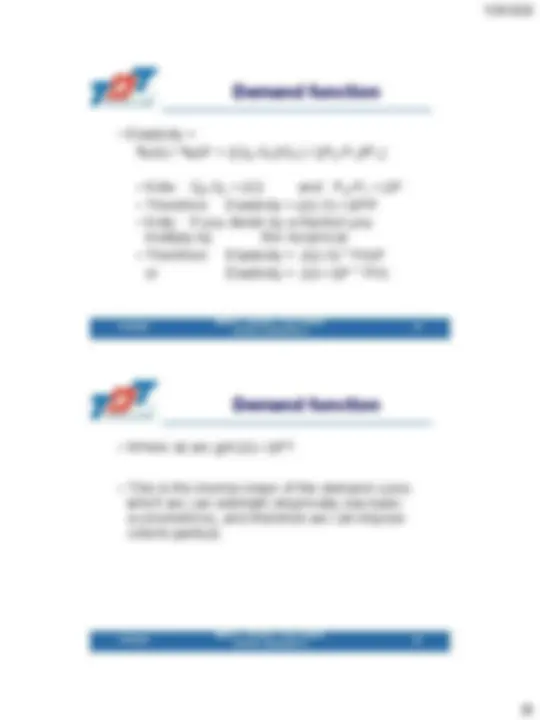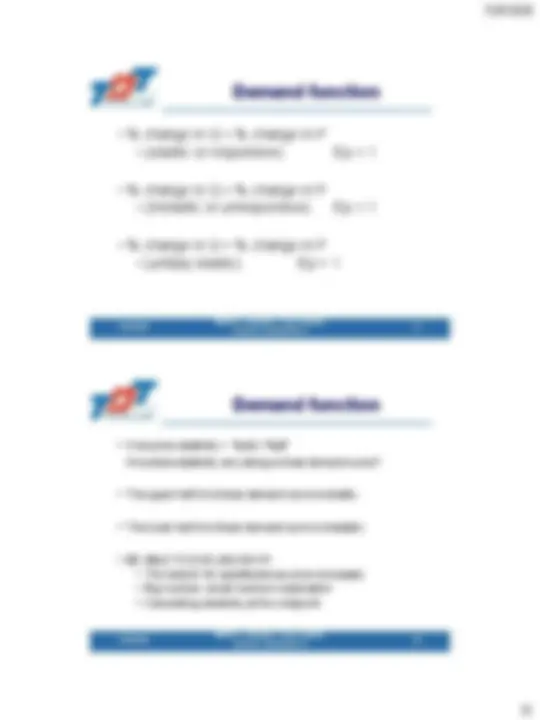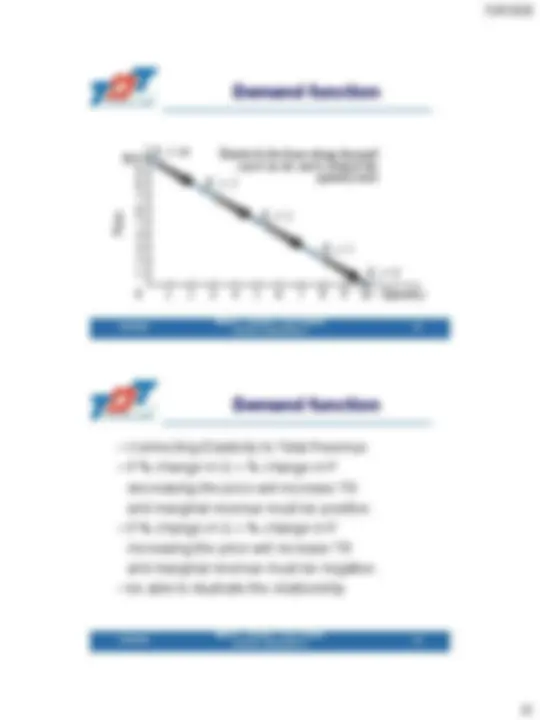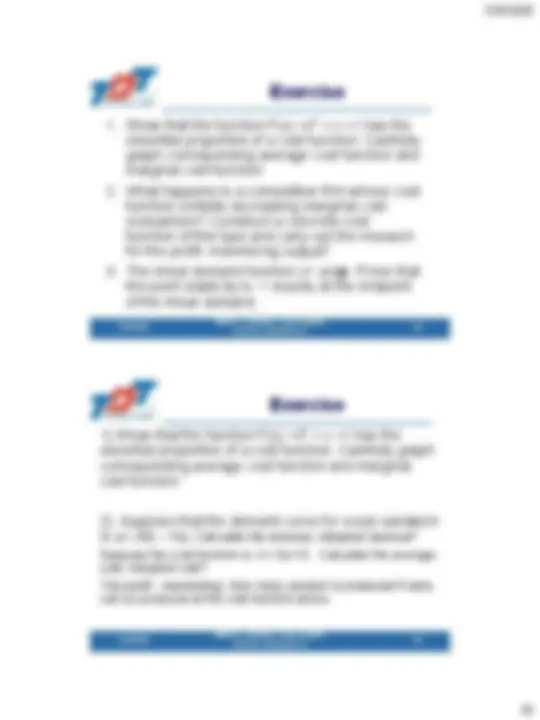Download One-Variable Calculus: Applications in Economics and more Summaries Mathematics in PDF only on Docsity!
7/29/2020 B03013 calculus: Applications^ –^ Chapter 1: One-variable
CHAPTER 1:
ONE-VARIABLE CALCULUS:
APPLICATIONS
COURSE CODE: B
1
PREPARED BY: FINANCE DEPARTMENT
Key words
- Variable: biến
- Application: ứng dụng
- Function: hàm
- Revenue: Doanh thu
- Linear function: Hàm tuyến tính
- Elasticity: co giản
- Constant: Hằng số
- Coefficient: hệ số gốc
- Exponential: hàm mũ
- Quadractic: bậc 2, quadractic equation: hàm bậc 2 7/29/2020 B03013 calculus: Applications^ –^ Chapter 1: One-variable 2
Key works
- Dictatorial: độc tài, độc đoán
- Treat: giải quyết, bàn về
- Magnitute: độ lớn, tầm quan trọng 7/29/2020 B03013 calculus: Applications^ –^ Chapter 1: One-variable 3
LEARNING OBJECTIVES
Define production function and its application. Introduce the general cost function and a derived cost function with one variable Identify revenue and profit function with one variable. Introduce the demand function and its elasticity. 7/29/2020 B03013^ –^ Chapter 1: One-variable calculus: Applications 4
One-variable function
A linear function:
- y=f(x)=a+bx
- One independent variable (x)
- One dependent variable (y).
- a: constant term/intercept.
- b: coefficient/slope and given rate of change
Graph : 2 points satisfied the equation and
connected.
7/29/2020 B03013^ –^ Chapter 1: One-variable calculus: Applications 7
One-variable function
- Graph of the linear function: 7/29/2020 B03013^ –^ Chapter 1: One-variable calculus: Applications 8
One-variable function
- A quadratic function and exponential function 7/29/2020 B03013^ –^ Chapter 1: One-variable calculus: Applications 9
One-variable function
- Production function: labor input.
- Cost function- variable cost.
- Revenue/profit function: number of items sold.
- Demand function: price per unit. 7/29/2020 B03013^ –^ Chapter 1: One-variable calculus: Applications 10
Production function
- The number of inputs: often large. Economists simplify by suggesting some, like materials or labor, is variable, whereas plant and equipment is fairly fixed in the short run.
- A Production Function: only one variable input, labor, is easily analyzed. The one variable input is labor, L.
- Q = f (K, L) for two inputs case, where K as Fixed 7/29/2020 B03013^ –^ Chapter 1: One-variable calculus: Applications 13
Production function
7/29/2020 B03013^ –^ Chapter 1: One-variable calculus: Applications 14
Production function
7/29/2020 (^) B03013 – Chapter 1: One-variable calculus: Applications 15
Production function
7/29/2020 B03013^ –^ Chapter 1: One-variable calculus: Applications 16
Production function
- The production elasticity of labor ,
- EL = MPL/APL=(∆Q/∆L)/(Q/L) =(∆Q/∆L)(L/Q)
- The production elasticity of capital has the identical in form, except K appears in place of L.
- When MPL> APL, then the labor elasticity, EL>1. a 1 percent increase in labor will increase output by more than 1 percent.
- When MPL<APL, then the labor elasticity, EL<1. a 1 percent increase in labor will increase output by less than 1 percent. 7/29/2020 B03013^ –^ Chapter 1: One-variable calculus: Applications 19
Production function
- When MP > AP, then AP is RISING
- When MP < AP, then AP is FALLING 7/29/2020 B03013^ –^ Chapter 1: One-variable calculus: Applications 20
Production function
- Total, Marginal, and Average Product Curves 7/29/2020 B03013^ –^ Chapter 1: One-variable calculus: Applications 21
Production function
7/29/2020 B03013^ –^ Chapter 1: One-variable calculus: Applications 22
Cost function
- Average variable cost is variable cost per unit of output. AV(q)=C(q)/q Short-run marginal cost is the rate at which costs increase in the short-run. SMC(q)=slope of C(q) 7/29/2020 B03013^ –^ Chapter 1: One-variable calculus: Applications 25
Cost function
Relation between short-run Marginal Costs and Average Variable Costs
- When SMC is below AVC, AVC decreases as q increases.
- When SMC is equal to AVC, AVC is constant (its slope is zero).
- When SMC is above AVC, AVC increases as q increases. 7/29/2020 B03013^ –^ Chapter 1: One-variable calculus: Applications 26
Revenue and profit function
- Most economists treat the firm as a single decision-making unit - The decisions are made by a single dictatorial manager who rationally pursues some goal - Usually profit-maximization 7/29/2020 B03013^ –^ Chapter 1: One-variable calculus: Applications 27
Revenue and profit function
- A profit-maximizing firm chooses both its inputs and its outputs with the sole goal of achieving maximum economic profits - seeks to maximize the difference between total revenue and total economic costs
- If firms are strictly profit maximizers, they will make decisions in a “marginal” way - examine the marginal profit obtainable from producing one more unit of hiring one additional laborer 7/29/2020 B03013^ –^ Chapter 1: One-variable calculus: Applications 28
Revenue and profit function
- To maximize economic profits, the firm should choose the output for which marginal revenue is equal to marginal cost 7/29/2020 B03013^ –^ Chapter 1: One-variable calculus: Applications 31
MC
dq
dC
dq
dR
MR
Revenue and profit function
- MR = MC is only a necessary condition for profit maximization
- For sufficiency, it is also required that
- “marginal” profit must be decreasing at the optimal level of q 7/29/2020 B03013 calculus: Applications^ –^ Chapter 1: One-variable 32
2 2
q q q q
dq
d q
dq
d
Revenue and profit function
7/29/2020 B03013 calculus: Applications^ –^ Chapter 1: One-variable 33 q1 q
Revenue and profit function
- If a firm can sell all it wishes without having any effect on market price, marginal revenue will be equal to price
- If a firm faces a downward-sloping demand curve, more output can only be sold if the firm reduces the good’s price 7/29/2020 B03013 calculus: Applications^ –^ Chapter 1: One-variable 34 dq dp p q dq dpq q dq dR MR q [ ( ) ] marginalrevenue ( )
Revenue and profit function
- To determine the profit-maximizing output, we must know the firm’s costs
- If subs can be produced at a constant average and marginal cost of $4, then MR = MC
- q /5 + 10 = 4 q = 30 7/29/2020 B03013 calculus: Applications^ –^ Chapter 1: One-variable 37
Example 1
Suppose that the demand curve for a sub sandwich is q = 300 – 20 p. Calculate the revenue, marginal revenue. To determine the profit - maximizing, How many product is produced If subs can be produced at a constant average and marginal cost of $ 7/29/2020 B03013 calculus: Applications^ –^ Chapter 1: One-variable 38
Example 2
Suppose that the demand curve for a sub sandwich is q = 200 – 30 p. Calculate the revenue, marginal revenue. To determine the profit - maximizing, How many product is produced If subs can be produced at a cost function (C= 5q+300) 7/29/2020 B03013 calculus: Applications^ –^ Chapter 1: One-variable 39
Revenue and profit function
- The concept of marginal revenue is directly related to the elasticity of the demand curve facing the firm
- The price elasticity of demand is equal to the percentage change in quantity that results from a one percent change in price 7/29/2020 B03013 calculus: Applications^ –^ Chapter 1: One-variable 40
q
p
dp
dq
dp p
dq q
e q p
,

